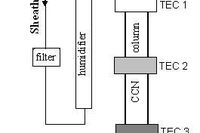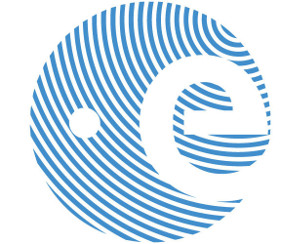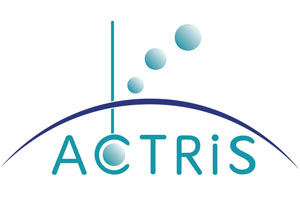CCN instrument
| PI | Athanasios Nenes |
| Participant | Georgia Tech |

Developed by Droplet Measurement Technologies, the CCN Instrument is a continuous-flow streamwise thermal-gradient CCN chamber (CFSTGC) that counts the fraction of aerosol particles that become droplets when exposed to a given water vapor supersaturation (RH>100%). Measurements will provide total hygroscopicity of PM1 aerosol in the boundary layer. The system is supplied by the Georgia Institute of Technology (http://nenes.eas.gatech.edu/). The instrument can operate between 0.1 and 3% supersaturation and is currently operating in Supersaturation-stepping Mode, completing one cycle of 5 supersaturations (0.2, 0.4, 0.6, 0.8 and 1%) in around one hour.
The design constitutes of a cylindrical continuous-flow thermal-gradient diffusion chamber employing a novel technique of generating a supersaturation: by establishing a constant streamwise temperature gradient so that the difference in water vapor and thermal diffusivity yield a quasi-uniform centerline supersaturation. This design maximizes the growth rate of activated droplets, thereby enhancing the performance of the instrument. The temperature gradient and the flow through the column control the supersaturation and may be modified to retrieve CCN spectra.
The full description of the instrument can be found in Roberts and Nenes 2005:
Roberts, G., and A. Nenes (2005). "A Continuous-Flow Streamwise Thermal-Gradient CCN Chamber for Atmospheric Measurements", Aeros. Sci. Tech., 39, 206−221
Recent activity
News
- ITaRS participation in CHARADMExp (Jul 10th)
- UAV measurements (video) (Jul 1st)
- Cyprus Institute UAVs are heading to Sitia's airport (Jun 26th)
- Saharan dust is approaching (Jun 24th)
- Getting prepared for UAV flights over Crete (Jun 23rd)
Uploaded data
- HALO realtime (Sep 9th)
- FLEXPART (Jul 31st)
- WRF WIND (Jul 31st)
- WRF WIND (Jul 31st)
- WRF WIND (Jul 31st)




